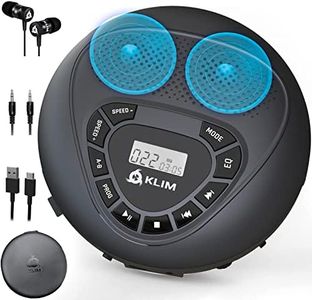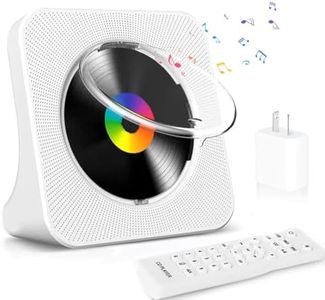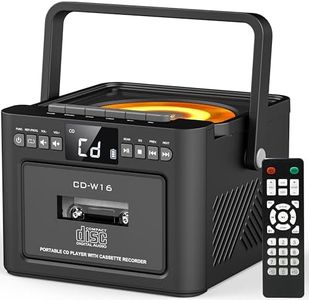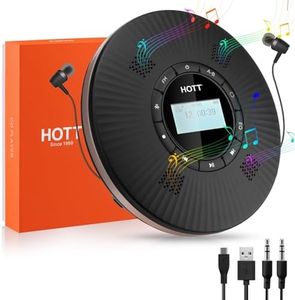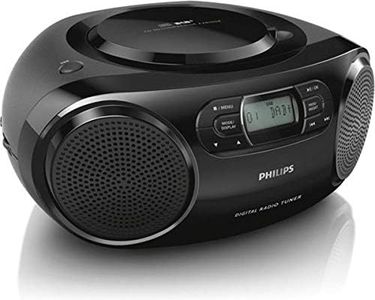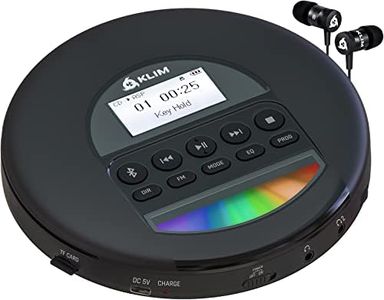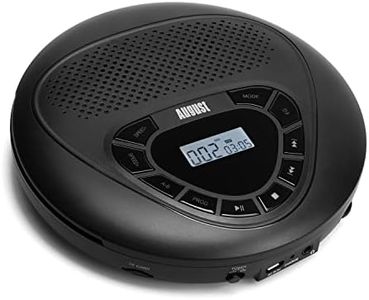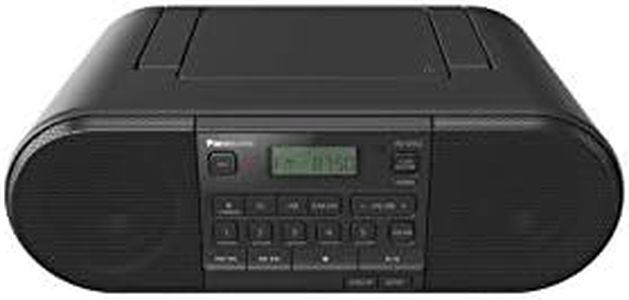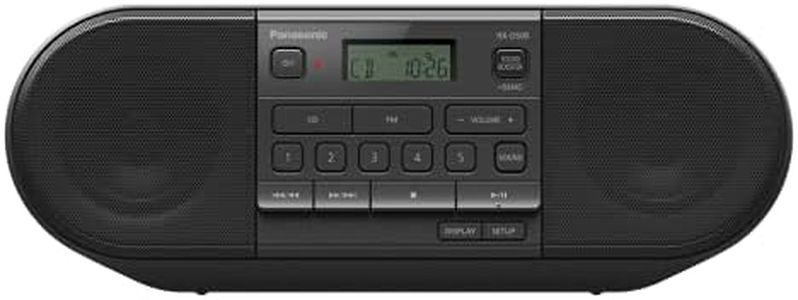We Use CookiesWe use cookies to enhance the security, performance,
functionality and for analytical and promotional activities. By continuing to browse this site you
are agreeing to our privacy policy
10 Best Portable Cd Players
From leading brands and best sellers available on the web.By clicking on a link to a third party's website, log data is shared with that third party.
Buying Guide for the Best Portable Cd Players
Choosing a portable CD player can be a straightforward process if you focus on a few key factors that align with your personal listening habits. Consider where and how you plan to use it: Are you commuting, exercising, or mainly using it at home? Think about the features that will make your experience enjoyable and hassle-free. Start by outlining what matters most to you in everyday use, such as ease of carrying, sound quality, battery life, and some modern convenience features. By understanding each key aspect, you’ll be able to pick a player that suits your lifestyle and ensures your CDs sound their best wherever you go.Skip Protection (Anti-Shock)Skip protection, also known as anti-shock, helps prevent music interruptions if your portable CD player is bumped or jostled. Older or basic models may not have this feature, so any sudden movement can make your music skip. Players usually offer skip protection specified in seconds, like 10, 40, or even 60 seconds. The higher the value, the better it protects against interruptions—a good choice if you plan to use your CD player while walking, jogging, or traveling. If you'll mostly use the player while sitting still, basic protection or none may be sufficient.
Battery LifeBattery life refers to how long the CD player can run on a set of batteries or a single charge. Some players use standard AA batteries, while others have built-in rechargeable batteries. The amount of playback time varies—some offer only a few hours, while others last 20 hours or more. If you'll be using the player for long trips or away from power sources often, a longer battery life is essential. For quick, occasional listening, shorter battery life might not be a problem.
Sound QualitySound quality is affected by both the player’s internal components and its ability to read CDs accurately. While most modern portable CD players provide acceptable sound for everyday listening, some offer enhancements like bass boost or higher-quality headphone outputs. If you are picky about audio quality or plan to use better headphones, look for players known for clear, balanced sound. For casual listening, standard sound quality is usually sufficient.
Portability (Size and Weight)Portability is about how easy the CD player is to carry around. Smaller, lightweight models are more comfortable for on-the-go use, such as commuting or traveling, while slightly larger players may offer bigger buttons or screens but can be heavier and bulkier. If you want to listen while walking or jogging, prioritize the most compact, light designs. If it's mostly for home use, size and weight become less important.
Playback Features (Programming, Repeat, Shuffle)Playback features let you control how music is played. Programming allows you to pick and play tracks in a specific order, repeat can loop a song or the whole album, and shuffle mixes up the track order. These features add flexibility and can keep listening sessions interesting, especially if you enjoy customizing your experience or use the same CDs often. If you only listen to albums straight through, standard play mode may be all you need.
Headphone Output and CompatibilityThe headphone output refers to how you connect your headphones—usually a standard 3.5mm jack. Some players may also support line-out connections for speakers or car stereos. It's important your player works with the headphones or external devices you want to use. Check for compatibility if you have special high-impedance headphones or plan to connect to other audio systems. For ordinary earbud users, any standard headphone jack will suffice.
CD Format CompatibilityFormat compatibility means what types of CDs the player can read. Most players handle standard audio CDs, but some can also play MP3 CDs or even recordable discs (CD-R, CD-RW). If you have a collection of homemade or data discs with MP3s, look for a player that advertises support for these formats. If you only listen to commercial albums, you won’t need extra format compatibility.
